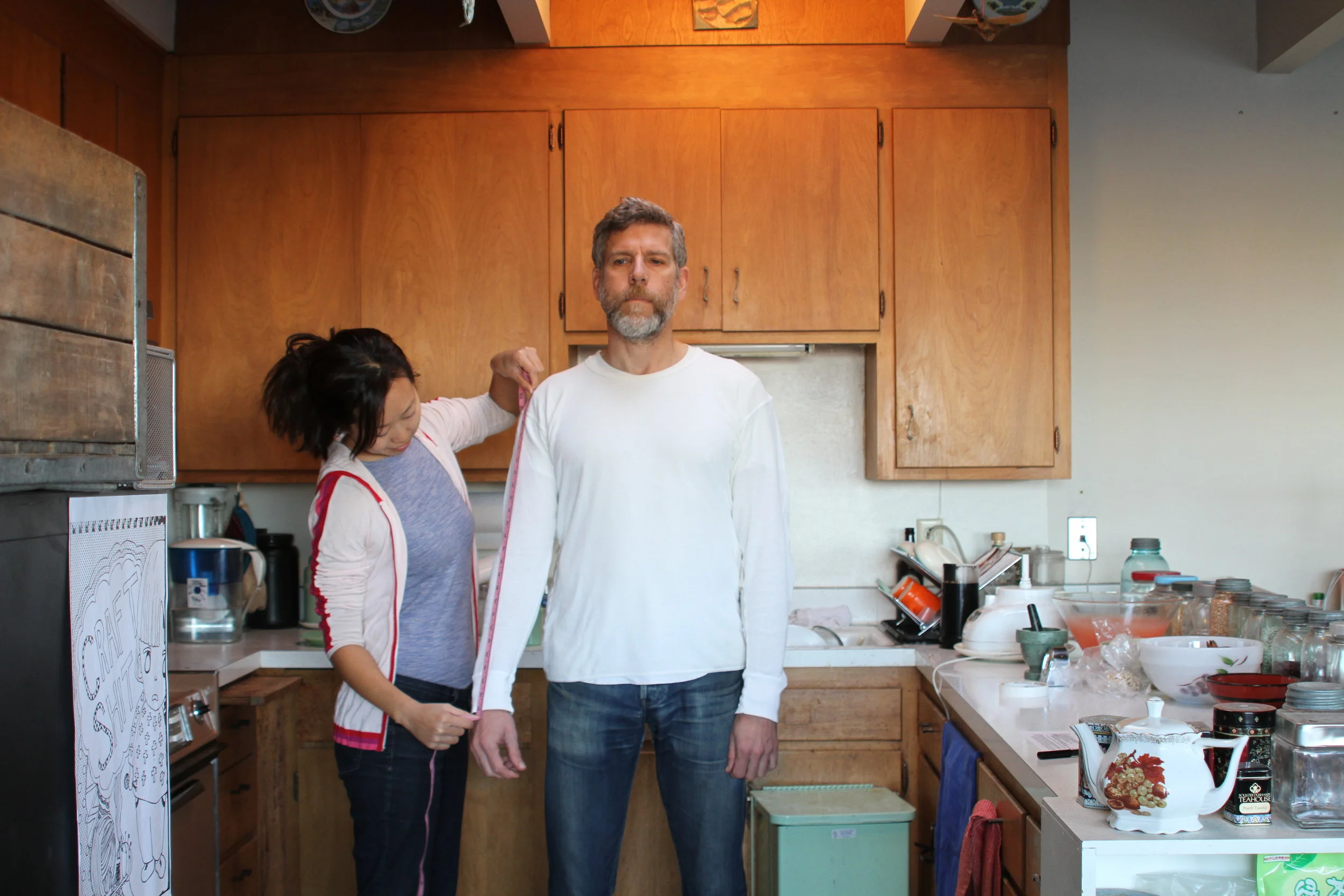Who's Coming to Save You?
In the 1970s and ‘80s the Ku Klux Klan sent Christy Chan’s Chinese American family letters demanding that they self-deport. Throughout the South, many non-white and non-Christian families experienced similar, or worse, forms of harassment. While informed by her personal experience with the Klan, Chan’s work does not demonize the individuals who participate/d in this group nor positions herself as a victim. Though the KKK’s iconic robe incited terror for so many years, Chan disrupts its reference with formal staging, banal situations and humor. By evoking such a wide range of emotions and contexts, Chan prompts her viewers to wrestle with the ways we address the persistence of racism in America.
The works in Chan’s Who’s Coming to Save You? revolve around the seemingly ordinary activities of obtaining, fitting and filming an authentic Klan robe. To procure the robe, Chan contacted “Miss Anne of Alabama,” a fifth generation Klanswoman whose business is making bespoke Klan robes. In their telephone conversations—the basis for Chan’s live event The Long Distance Call (2015)—she and “Miss Anne” discussed the details of the robe and the events of each other’s lives. In Measuring (2013), Chan efficiently measures an actor for the fabrication of a Klan robe and in Walking (2014), Chan films an actor in a robe simply walking through a Bayou forest. In these three works, “Miss Anne,” Chan and her actor go about their business without regard to the grave implications of the Klan robe. With all that is unspoken in Chan’s work, an eeriness emerges from this banal approach and what we collectively know about the KKK.
Chan ups the ante by imbuing the menacing quality of the white robe with humor and linguistic play in her video As Seen on TV (2014). Though the KKK currently defines themselves as a non-violent Christian organization dedicated to “protecting” white America, historically they terrorized people with evening rampages and were colloquially referred to as “Night Riders.” Knight Rider was also an ‘80s television show from Chan’s youth, starring Michael Knight as a vigilante action hero. In Chan’s video, she replaces Michael Knight with a hooded Klansman who speeds down the road in his high tech talking car “K.I.T.T.,” leaps and runs about, and celebrates his victories with a champagne toast and a lovely lady. Chan humorously creates a parallel between the surface presentation of the KKK as a vigilante group and the popular television show, identifying the underlying menace, call to justice, and absurdity in each.
While the KKK used their robes to intimidate their victims, Chan’s unflinching use of the robe is a reversal of power. Moreover, by filming a Klan robe with beautiful staging, humor and everydayness, Chan extends its reading beyond the KKK’s intentions. As the Klan was most visible and active between the post-Civil War Reconstruction Era and the Civil Rights Movement, they cannot be seen as merely an insidious organization in our country’s history. The KKK is still present and active, as are other informal and institutional forms of racism. Genevieve Quick | Southern Exposure



